 |
| Sears Elmwood • 1911 • 101 S. Grove Street, Normal, Illinois |
We do love the Sears Elmwood ! Any chance we get to highlight this model, we take. So, today I present to you Evie and Josh Leichtenberg's beautiful creamy-yellow Sears Elmwood in Normal, Illinois. I have uncovered lots of good documentation for this house's history, and Evie has taken some good interior photos for us, so sit back and enjoy.
First, the obligatory "money shot", kind of matching the catalog view to the house:
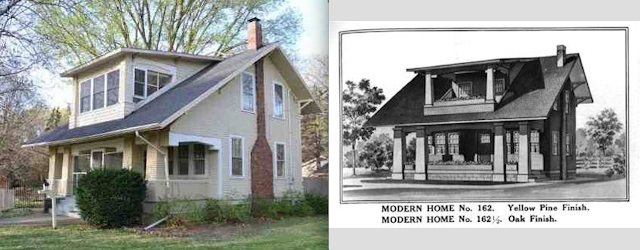 |
| 101 S. Grove Street next to the 1911 catalog image, when the house was called the No. 162. (Source: Arts & Crafts Society) |
If you've been a somewhat regular reader of this blog, you may know that Sears first offered the Elmwood, and then made some minor changes, and re-packaged the model as the Sunbeam. That change happened in 1922. The most obvious difference, is that the big, upstairs sleeping porch in the front of the house, was enclosed on the Sunbeam, as you can see here:
 |
| An authenticated 1926 Sears Sunbeam, that I wrote about here. |
Well, first of all, the county assessor gives it a build date of 1908. But, I was suspicious of that, because that's too early for even the Elmwood, which wasn't introduced until 1911. These older records tend to be off by a few years -- sometimes they are guesses within 5-20 years or more. In fact-if the build date says, "1900", that almost surely means that there is no record, and the best guess is that the house was built just sometime in the first decades of the 1900s. Sometimes, the date reflects when the land was purchased, but the structure wasn't built on it for a few more years. Also, we had already found that the Sears #200 version of the Ivanhoe, in Normal, Illinois, had a build date that was off by a few years.
But, the most conclusive evidence was this great photo that has been handed down from owner to owner: an old photo showing utility poles being installed in the neighborhood, right in front of the house, and there it is! The house, with its sleeping porch still un-enclosed. So, definitive evidence that the house was bought as the Elmwood model, and therefore also dates to before 1922.
 |
| No date on the photo, but it's clearly from the 19-teens to 1930s, and there's the house, with its un-enclosed porch upstairs! |
Tonight, I also found that the assessor's website has several great photos, and here is the house, in 1999, with the upper sleeping porch still un-enclosed:
 |
| Source |
Evie sent this photo, of the other side, too. Below it, is a Sears Elmwood in Elkhart, Indiana, from 1912.
Elmwood vs Sunbeam: The Staircase Issue
Since we researchers so often see this Sears house with the upper sleeping porch enclosed, we usually just can't tell whether or not the house was an Elmwood originally, or a Sunbeam , if we can only see the outside. Even if we see the inside, we can't always see all of the little elements that we have come to learn were particular to the Elmwood, vs the Sunbeam (you can read about those things in this earlier blog post of mine-- issues like where the back door is placed, and where the entry door to the bathroom is, for example).
But, here is one that I only just recently noticed: the Elmwood had only one tread leading up to that staircase that is in the corner of the living room. But, the Sunbeam has two treads there! So, if we are able to see that room, we can now judge Elmwood vs Sunbeam by that spot on the staircase. Here's what I mean:
The Living Room Closet
Evie also told me that their living room doesn't have a closet, as we would expect it to have. The Elmwood and Sunbeam both show closets accessible from the living room, but I now realize that the earlier Elmwood has that closet in a different space than where it is in the later Elmwood, and in the Sunbeam. Look at the circled area, and where the green arrow points out the closet placement:
Here's a catalog image showing the interior of the Elmwood, and you can see that there is a closet door there on the same wall where the staircase is. This image first appeared in the 1918 catalog, but was also in the 1921 catalog... though, by then, the closet had moved to the other wall, and... I guess that opening under the stairs was still a closet, too?
But, by the time of the Sunbeam, that doorway had moved to ONLY over on the same wall that separates the living room from the dining room and kitchen. So...
• If you see a door ONLY there, and NOT under the stairs at all, then you have a Sunbeam.
• If you see NO closet at all on the wall shared with the DR and kitchen, then you have an early-years Elmwood.
• If you have a closet door in both spaces, you have a later-years Elmwood.
You can see the Sunbeam closet layout here, in the catalog image from 1925, and in the living room of this authenticated 1926 Sunbeam in Florida:
The Back Door and the Pantry
The back door is another issue that is different in the two models. Normally, the Elmwood's back door is off to one side on the back of the house, and the Sunbeam's back door is pretty well centered back there -- that helps us, on the rare occasion that we can see the back of the house. Here's a catalog comparison-- note the areas indicated in blue:
But, on Evie and Josh's house, the back door is centered. Geeze! This is the kind of thing that really throws us off when we are trying to pin-point the era and the model of the house. But, Evie pointed out that earlier owners had a sort of mud room put in, and must have moved the back door to the center. She said that you can tell that the siding is newer on the section of the back of the house where the door must have been originally, and the trim around the new door is different than trim in the rest of the house. That makes sense, because also, at some point, the kitchen was slightly re-designed and enlarged to take over that pantry space (see it in the red circle) to put floor-to-ceiling cabinets, and the refrigerator, there. They took over the space where the back door HAD been, and closed that off (like it is in the Sunbeam) to make a U-shaped kitchen counter area. It's possible that this was even re-designed at the time of build -- no way to know, but these are obviously newer cabinets and counter, so the change was made at some point.
Here's an image with the floor-plan turned, so you can see how that area of the kitchen is now-- the window orients you. Notice, too, the boxed-in area where the furnace-vent chimney is... just as it should be, for the Elmwood. See why I would be confused, here, though, when originally looking at this house? Because the Sunbeam's kitchen has a solid wall there in the corner where the Elmwood would normally have the back door... but the Sunbeam's chimney is outside of the house... I looked at this kitchen and thought, "What???".
Here, then, is the former pantry space (or part of it, anyway). You can see from the section of the catalog floor plan, that the wall where the entry to the dining room is, would normally be only a tiny little space of wall, because it would be sticking out a teeny bit into the kitchen, to form the doorway into the pantry. But all of that doorway and wall separating the pantry from the kitchen, has been removed, and a big section of the original pantry space now has kitchen cabinets and the refrigerator:
Here they are shown in a real estate photo (sorry, it's kind of grainy) of one of the two bedrooms upstairs. The door with glass panes leads out to the sleeping "balcony", and there is one of these doors in each of the two bedrooms. Another door is to a closet, and the door you can only partially see, is to the hallway.
Here's the 2nd-floor layout:
But, wait! Here's the BEST part... Josh made a Lego version of their Elmwood, for wedding day!
 |
| You can read about this one in this earlier blog post of mine.. |
Since we researchers so often see this Sears house with the upper sleeping porch enclosed, we usually just can't tell whether or not the house was an Elmwood originally, or a Sunbeam , if we can only see the outside. Even if we see the inside, we can't always see all of the little elements that we have come to learn were particular to the Elmwood, vs the Sunbeam (you can read about those things in this earlier blog post of mine-- issues like where the back door is placed, and where the entry door to the bathroom is, for example).
But, here is one that I only just recently noticed: the Elmwood had only one tread leading up to that staircase that is in the corner of the living room. But, the Sunbeam has two treads there! So, if we are able to see that room, we can now judge Elmwood vs Sunbeam by that spot on the staircase. Here's what I mean:
 |
| 1911 Elmwood living room at 101. S. Grove Street, Normal, Illinois |
Evie also told me that their living room doesn't have a closet, as we would expect it to have. The Elmwood and Sunbeam both show closets accessible from the living room, but I now realize that the earlier Elmwood has that closet in a different space than where it is in the later Elmwood, and in the Sunbeam. Look at the circled area, and where the green arrow points out the closet placement:
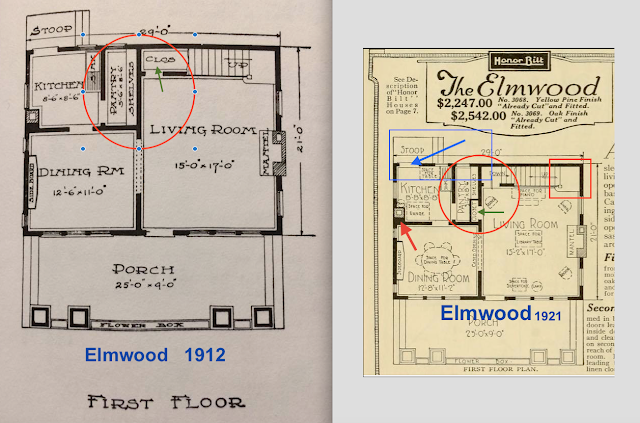 |
| Closet placement differs in 1912 vs 1921 Elmwood. |
 |
| Green arrow pointing out closet door from Elmwood-only era, and pink arrow showing Elmwood-only single-tread staircase entry step. |
• If you see a door ONLY there, and NOT under the stairs at all, then you have a Sunbeam.
• If you see NO closet at all on the wall shared with the DR and kitchen, then you have an early-years Elmwood.
• If you have a closet door in both spaces, you have a later-years Elmwood.
You can see the Sunbeam closet layout here, in the catalog image from 1925, and in the living room of this authenticated 1926 Sunbeam in Florida:
The Back Door and the Pantry
The back door is another issue that is different in the two models. Normally, the Elmwood's back door is off to one side on the back of the house, and the Sunbeam's back door is pretty well centered back there -- that helps us, on the rare occasion that we can see the back of the house. Here's a catalog comparison-- note the areas indicated in blue:
 |
| Blue box and blue arrow, showing where the back door is on the two different models. |
Here's an image with the floor-plan turned, so you can see how that area of the kitchen is now-- the window orients you. Notice, too, the boxed-in area where the furnace-vent chimney is... just as it should be, for the Elmwood. See why I would be confused, here, though, when originally looking at this house? Because the Sunbeam's kitchen has a solid wall there in the corner where the Elmwood would normally have the back door... but the Sunbeam's chimney is outside of the house... I looked at this kitchen and thought, "What???".
 |
| Elmwood furnace chimney location + window + no more back door. |
 |
| The former pantry space of the Elmwood's floor plan, taken over to incorporate it into the kitchen. |
Here's that mud room, centered on the back of the house!
 |
| This is from the real estate listing, available here. |
So... maybe you didn't need to see all of this... but I needed to see all of this to understand why Sunbeam elements seemed to be in an Elmwood. Ha! It all makes sense, now! And, I've learned some more little details that distinguish the two models, and maybe all of this will help you, if you're ever trying to decide whether your house is an Elmwood or a Sunbeam, eh?
From The Catalog
We always love when we get to see things on the interior of a house we hope is a Sears house, that are found in the Sears Building Supplies or Modern Homes catalogs. Here are some of those finds in Evie and Josh's house.
The doors are the Craftsman R and H models:
 |
| Notice how they refer to the "new" Craftsman style! These two pages are from the 1912 Sears Building Supplies catalog (here). |
Here they are shown in a real estate photo (sorry, it's kind of grainy) of one of the two bedrooms upstairs. The door with glass panes leads out to the sleeping "balcony", and there is one of these doors in each of the two bedrooms. Another door is to a closet, and the door you can only partially see, is to the hallway.
Here's the 2nd-floor layout:
Here is that Craftsman R door used as the front door (again, real estate photo):
Did you notice the big hinges on those doors in the bedroom? And the door handle hardware? Here are nice close-ups that Evie sent me. That's a well-known Sears hinge that we often see on the models from the early years... 19-teens and 1920s. And, the door handle hardware is a pattern Sears called, Stratford .
 |
| Sears Stratford design door hardware |
But, the best part, is this fabulous Villa Sideboard:
And, it's not just shown as an element for sale in the catalog... it's also shown as part of the interior of the Elmwood, in the 1918 catalog! There it is, with that diamond-patterned leaded glass in the windows on the wall around it.
Let's get a closer look:
Who Lived Here?
Well, this took some serious digging. But, thanks to old names on deeds, that Evie and Josh shared with me, we had a starting point.
I believe that 1911 is the build year of this house, even though the city assessor gives 1908 as the build year. Here's why:
In 1908, the owner of the greater area of land there, was Caleb D. Pierce (C.D. Pierce), and his wife, the former Hattie Dunmire (or Dunmeyer). C.D. Pierce ran a large fruit farm there, and also owned hundreds of acres of fruit farmland in Oklahoma.
In July of 1911, C. D. Pierce sold a large portion of his fruit farm -- 20 acres -- at the northwest corner of Sudduth Road (now College Avenue) and Grove Street. A newspaper account of the sale, states that Pierce still owned "12 acres across the road, south of the piece sold" (that would be the area where 101 S. Grove Street sits), and adds, "he will at once begin the erection of a modern house on this place, to be used by his son and family". His son was Floyd Pierce.
Normal City Directories show C.D. Pierce, and his son, Floyd, living at 103 N. Grove, in 1911. Floyd and his wife, Edith, had just married in 1909.
However, in 1912, Floyd has advertised his home for sale, describing it as a "new modern house", 1/2 mile from the university, on 12 acres -- this must surely be the house at 101 S. Grove Street, that Floyd's father, C. D. Pierce, was just beginning to build for his son, in 1911.
Here are Floyd and Edith Pierce, still owning their house at 101 S. Grove Street, in 1913.
In May of 1914, Floyd and Edith Pierce are back in Normal, according to Bloomington's paper, The Pantagraph, after living in Springfield for a while.
I'm not sure who lived in the house once Floyd Pierce put it up for sale in 1912. Though Floyd and Edith returned to Normal in 1914, it doesn't look like they returned to to live at 101 S. Grove Street.
1922-1979 • Frank Hersman
Surely the resident to live longest at 101 S. Grove Street, was the very interesting Frank Hersman. In 1978, when Frank was 92 years old, the Bloomington, Illinois newspaper, The Pantagraph, did a newspaper story on him. It appeared in the March 6 edition, and was entitled, "Hotline to heaven keeps man in balance". I'll let that interview tell his story:
In 1979, Frank sold the house for $40,000.
Though no longer living at 101 S. Grove Street, Frank enjoyed a special celebration for his 100th birthday:
Frank passed away at age 102:
1999-2012
 |
| A 1999 listing in The Pantagraph. |
In 1999, the house was bought by Alan and Wilma McLaughlin, who celebrated their 25th wedding anniversary in 2000, in their home at 101 S. Grove Street:
And, in 2012, they sold their Sears Elmwood to Evie and Josh, who later held their wedding ceremony at the house.
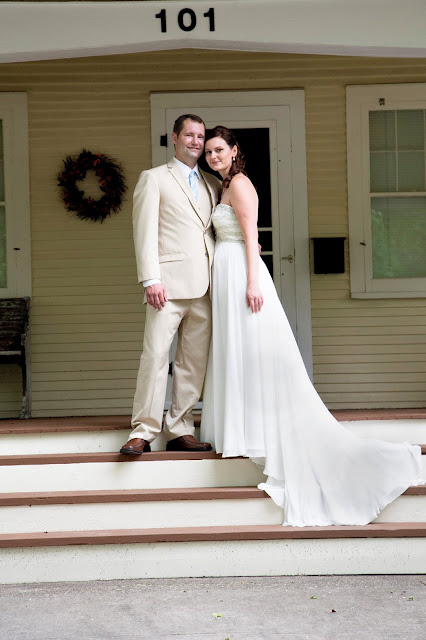 |
| Beautiful photo! Josh and Evie Leichtenberg on their wedding day. (Photographer: www.iviephotography.com ) |
 |
| Photographer: www.iviephotography.com |
Thanks a million to Evie and Josh for sharing their 1911 Sears Elmwood with me!
To see another Sears house in Normal, Illinois, click here, and you'll get to read about a big Sears No. 200, the Sears Ivanhoe model with a front porch.






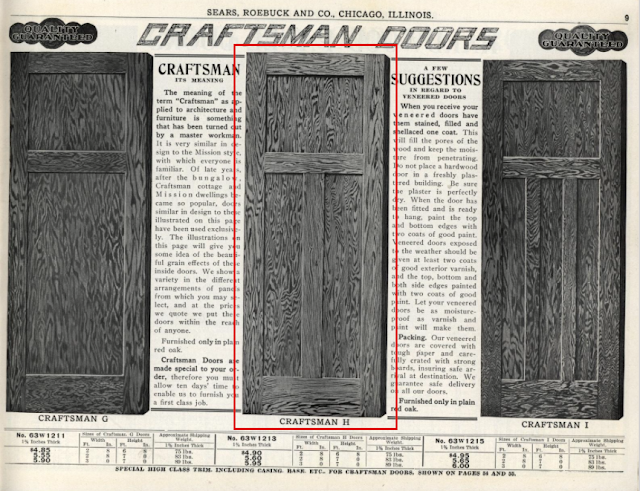












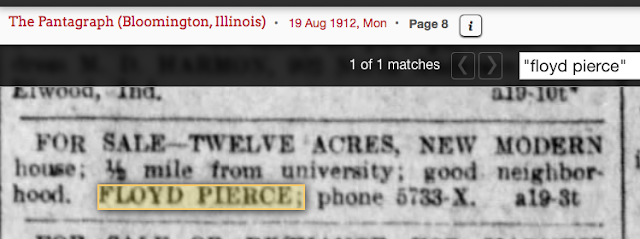

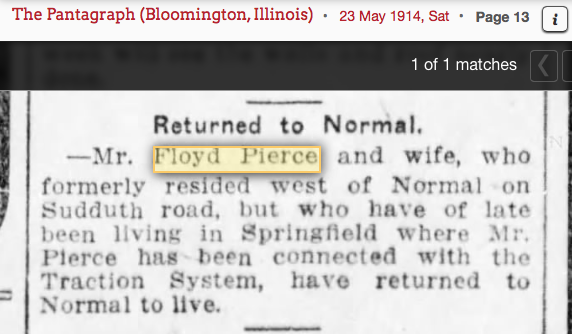












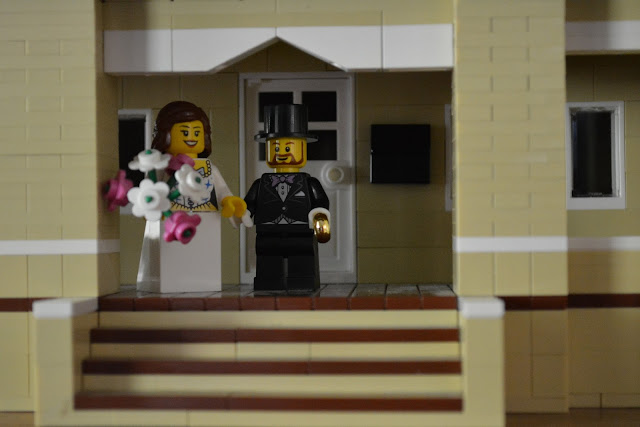
We could have chosen a sweeter couple to purchase our Elmwood. That alone is a unique chapter to your story. Alan & Wilma.
ReplyDeleteThis is Alan and Wilma McLaughlin,owners of this house from 1999 to 2012. Want to clarify that the original steps to the house face Grove street. My husband opened up the end of the porch and added the steps leading to the side yard.
ReplyDeleteAlso in the living room you can see where an opening (a doorway or window?) was closed at sometime. It would be visible in the picture of the current living except for the large piece of furniture on that wall. Perhaps knowing that will help.Love your write up!!
Alan and Wilma, thanks so much for your comments! I'm very glad that you enjoyed the blog about your former home. The information about the steps is great, and I'm so pleased to have the mystery of the missing closet solved!
DeleteJudith
Sears House Seeker